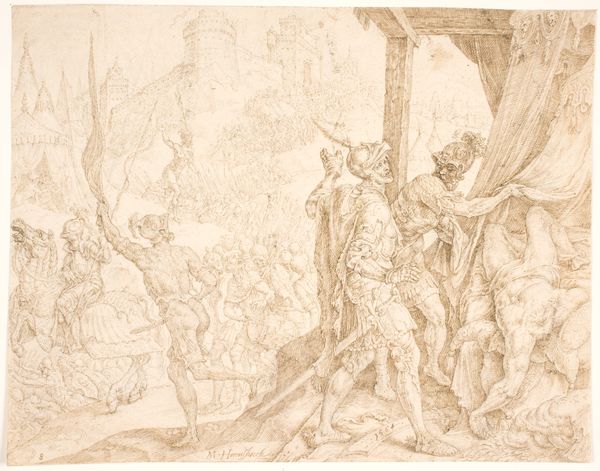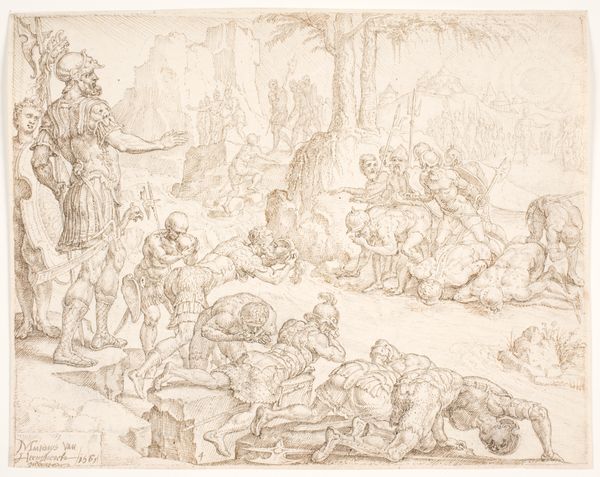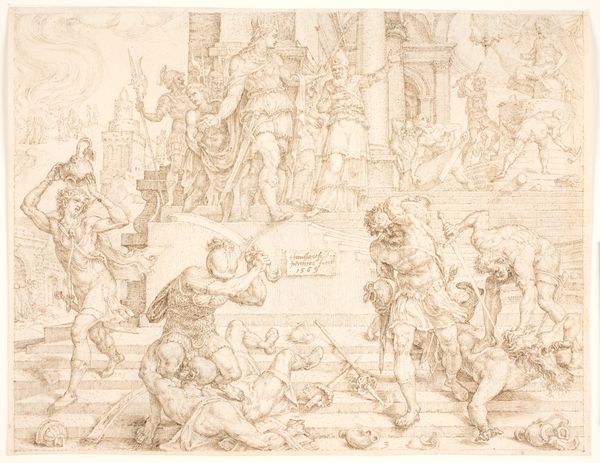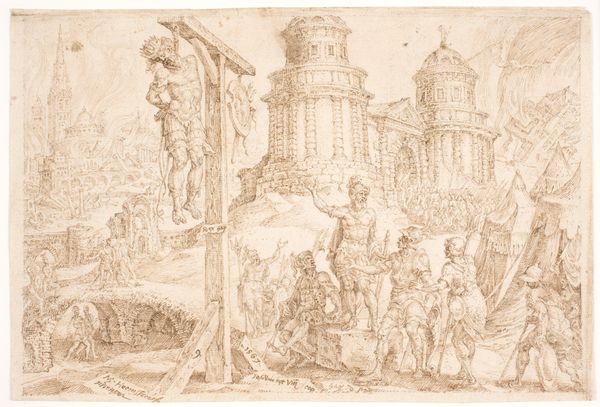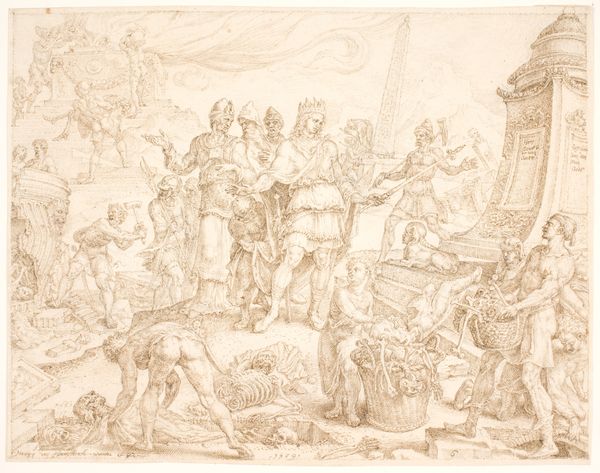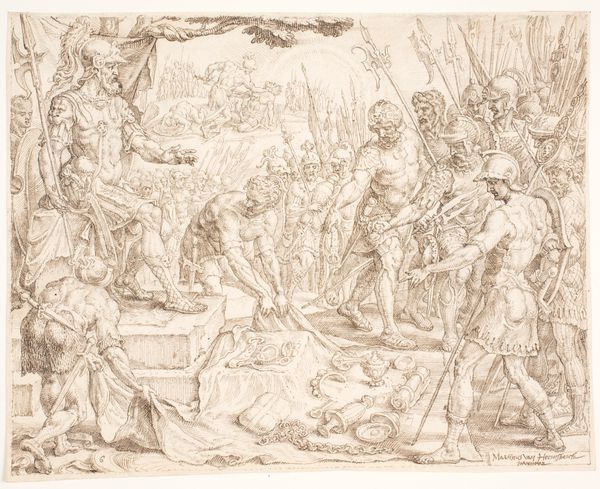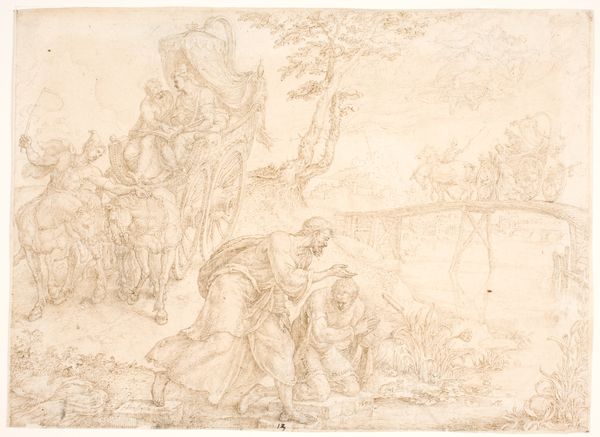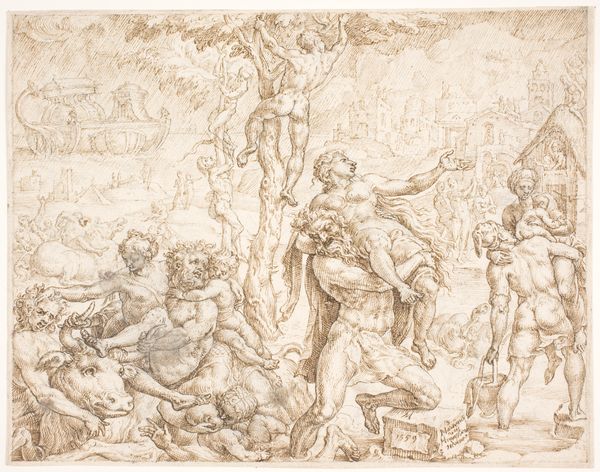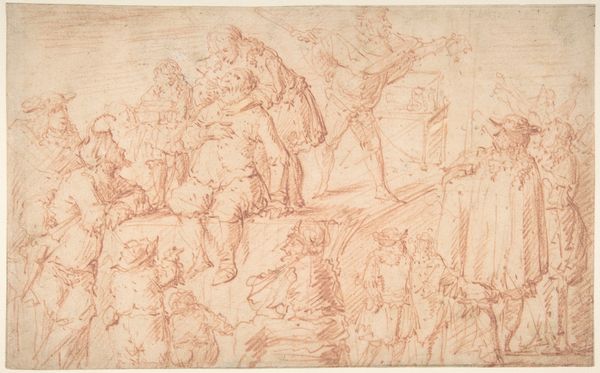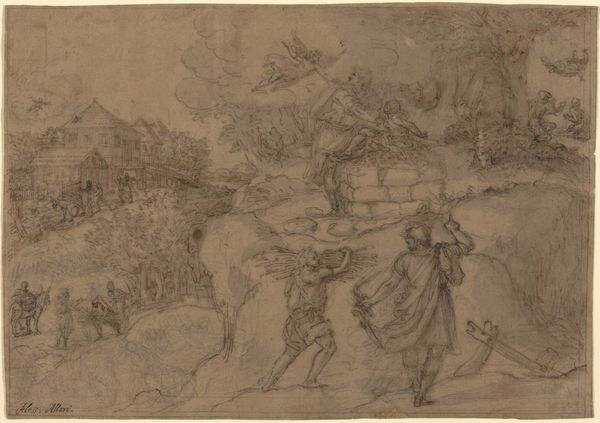
drawing, etching
#
drawing
#
narrative-art
#
etching
#
landscape
#
etching
#
figuration
#
11_renaissance
#
history-painting
#
northern-renaissance
#
academic-art
Dimensions: 140 mm (height) x 205 mm (width) (bladmaal)
Editor: Here we have Maarten van Heemskerck's 1567 etching, "Akan og hans familie bliver stenet," depicting the stoning of Achan and his family. It’s incredibly detailed, with a lot of figures packed into this landscape, yet there's a real sense of cold brutality about the whole thing. What do you make of this piece? Curator: The graphic violence is striking, isn't it? Heemskerck positions this biblical narrative, not just as a religious lesson, but within the visual language of the Northern Renaissance, complete with its own anxieties. Consider the ruinous architecture – classical forms decayed. What could that signify in the context of 16th-century religious upheaval and anxieties about social order? Editor: That’s a good point about the setting. It almost feels like a deliberate commentary on the decline of civilization. So, are you saying that Heemskerck uses this story as a means of talking about his contemporary world? Curator: Absolutely. He’s appropriating a biblical narrative to comment on contemporary society, specifically questioning power structures and societal morality during the Reformation. Who has the right to punish, and what are the implications of that power? This etching forces us to consider how narratives of exclusion and violence are constructed and justified. The stoning becomes less about religious justice and more about the performative enactment of power. What kind of contemporary parallels could we draw? Editor: Thinking about today, I can't help but think about scapegoating and the ways certain communities are demonized to serve political agendas. I suppose Heemskerck anticipated it all those centuries ago. Curator: Precisely. This artwork isn't simply an illustration of a biblical event; it's a poignant commentary on power, justice, and the manipulation of narratives to solidify social hierarchies. I hope this gives a renewed perspective on viewing artworks not just as historical objects but as mirrors reflecting and challenging our present. Editor: It certainly does. Thanks for sharing your insights, It gave me so much to reflect on when I look at it from now on.
Comments
No comments
Be the first to comment and join the conversation on the ultimate creative platform.
